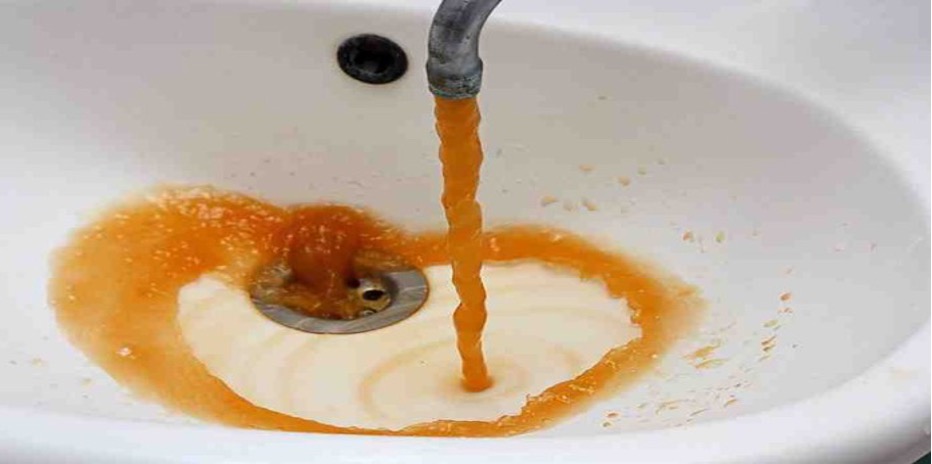
Photo: Alamy Stock
By Hailey Simmons, Intern at the Alliance for Sustainability and University of Alabama at Birmingham 2nd Year MPH Student
A new, disturbing study from Quest Diagnostics and Boston Children’s Hospital found that nearly 51% of 1.2 million children under the age of 6 in the U.S. had detectable levels of lead in their blood. It also uncovered tremendous inequity in those who were exposed to this toxin: children in the highest impoverished areas were approximately 3 times more likely to have elevated blood lead levels than those who lived in higher income areas. This challenge must be understood and acted on, hopefully through public policy and funding, such as the Administration’s proposed Infrastructure Bill.
The study found that the majority of exposure to elevated lead levels occurred in homes built before the 1950s and in low-income communities. Lead comes from cracking and peeling paint and dust in older homes, water pipes, areas near heavy industry and aviation fuels, and in some consumer products like toys, jewelry, electrical cords, bullets, lead shot and fishing sinkers.
According to the Centers for Disease Control and Prevention, there is no safe level of lead in children and even low levels in blood affect IQ, ability to pay attention, and academic achievement. Exposure to high lead levels of this neurotoxin can cause anemia, weakness, and kidney and brain damage.
The study also uncovered significant disparities as 6 in 10 children residing in the most impoverished areas had detectable blood lead levels compared to 39% of kids who resided in wealthier areas. And 58% of children from predominately Black neighborhoods had detectable blood lead levels versus 49% of children in white neighborhoods.
The reason for this social disparity? Socioeconomic status. That’s why it’s vital for policies to be implemented to address lead contamination in defenseless communities.
Lead contamination can easily be overlooked and has repeatedly impacted communities of color in a continual display of environmental injustice. A prime example of this is what occurred during the 2014 Flint, Michigan Water Crisis.
In the mid-1950s, Flint was a booming auto and industrial city with almost 200,000 people. For more than 100 years, the Flint River served as an unofficial waste disposal site for treated and untreated chemicals and junk from local industries. However, the 1980s put a halt to Flint’s successful economy due to rising oil prices and the closure of auto plants due to auto imports. With workers getting laid off and people relocating, Flint’s population declined to only 100,000 residents – the majority, Black, with nearly 45% of all residents living in poverty.
The struggling city attempted to save money by changing its drinking water source from Detroit’s water system to the Flint River. However, health issues arose for residents of Flint due to insufficient treatment and examination of the water – concerns that were persistently disregarded and unobserved by government officials. Reports subsequently showed that the tainted water was contributing to elevated blood lead levels in Flint’s children.

Photo: parlamag.com
The Flint Water Crisis was due to inappropriate corrosion control measures and was entirely preventable. Fortunately, the Biden Administration’s proposed Infrastructure Bill includes billions of dollars to support replacement of lead pipes and assure clean water nationwide, with at least $7.25 billion going to Michigan. It will take this kind of infrastructure investment to address the scope of the problem. However, even more funding is needed to address other lead hazards, including the removal of lead paint from people’s homes.
The good news is that there are tremendous benefits from making such public health investments. A 2018 study by the Pew Trusts found that “the maximum potential future benefits of preventing all lead exposure for the 2018 birth cohort, such that those children’s blood lead levels could be kept from rising above zero, could reach $84 billion, not including the costs to achieve such total prevention.” For example, “eradicating lead paint hazards from older homes of children from low-income families would provide $3.5 billion in future benefits, or approximately $1.39 per dollar invested, and protect more than 311,000 children.”
In the meantime, a number of steps should be taken to address this crisis:
- EPA reform is essential.
- It is imperative to increase lead exposure awareness.
- There must be home testing for lead or the inhabitant will never know whether there is a presence of lead.
- Residents and community organizations that represent them need to be equipped with engagement tools.
- Infrastructure must be improved more equitably.
- Most importantly, government officials must address structural and institutional racism.
Inequality extends outside of income. It is also about where you reside, the air you breathe, and the water you consume. For years, we have depended on the government to ensure equal access to resources, yet we still suffer the effects of a 200-year bequest of prejudiced procedures that led to segregation and unequal access to opportunity for people of color and the poor.
While barefaced Jim Crow-era laws and practices have chiefly vanished, the insidious impact of ongoing structural and institutional racism continues. Our lead crisis must be confronted and no one should ever have to experience another Flint Water Crisis.
